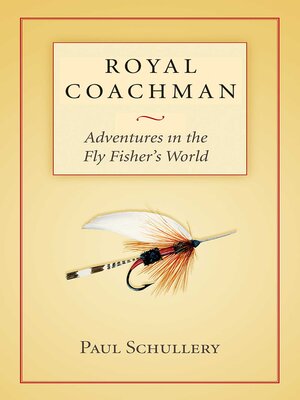
Sign up to save your library
With an OverDrive account, you can save your favorite libraries for at-a-glance information about availability. Find out more about OverDrive accounts.
Find this title in Libby, the library reading app by OverDrive.



Search for a digital library with this title
Title found at these libraries:
| Library Name | Distance |
|---|---|
| Loading... |
In Royal Coachman Paul Schullery is at once erudite emissary of the angle and consummate trout bum. And because not everyone can be both, we praise him as an American original.—James Prosek, author of Trout: An Illustrated History and The Complete Angler
Few have as much passion for fly-fishing as Paul Schullery, and even fewer have his endless curiosity about the history of the sport, but it is his awesome talent as a writer that makes Royal Coachman such fine and fun reading. He makes his passion, and his knowledge, so compelling that they become yours as much as his.—Gary LaFontaine, author of The Dry Fly: New Angles
The title derives from one of the most popular and versatile flies available, and the book delivers some meticulous history on the subject of fly patterns and their creators. . . . He gets at the culture, the mechanics and the evolution of the sport in an engaging and informative way. He also undertakes the question . . . of whether or not casting a dry fly can truly be called an art with a capital 'A.' He is to be congratulated for doing so without the usual he-man bombast or Zen-master voodoo so often found in rod and gun writing.—The New York Times
Few have as much passion for fly-fishing as Paul Schullery, and even fewer have his endless curiosity about the history of the sport, but it is his awesome talent as a writer that makes Royal Coachman such fine and fun reading. He makes his passion, and his knowledge, so compelling that they become yours as much as his.—Gary LaFontaine, author of The Dry Fly: New Angles
The title derives from one of the most popular and versatile flies available, and the book delivers some meticulous history on the subject of fly patterns and their creators. . . . He gets at the culture, the mechanics and the evolution of the sport in an engaging and informative way. He also undertakes the question . . . of whether or not casting a dry fly can truly be called an art with a capital 'A.' He is to be congratulated for doing so without the usual he-man bombast or Zen-master voodoo so often found in rod and gun writing.—The New York Times







